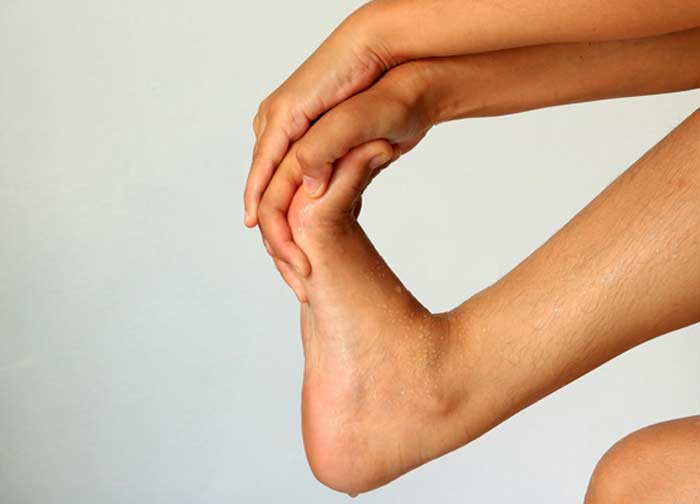
Pain on the bottom of the foot could have many causes. One of these is a condition called Morton’s neuroma.
Morton’s neuroma typically occurs on the ball of the foot in an area that leads to the toes. The most commonly affected region is that between the middle and fourth toes, causing symptoms that may radiate to the affected toes.
This condition is characterized by a thickening of the tissue around a nerve leading to the toes. Sometimes this may also occur as a result of swelling of the nerve itself. This puts pressure on the nerve.
Symptoms & Causes
Morton’s neuroma occurs gradually over a period of time. The amount of time it takes for this condition to get bad enough for symptoms to become apparent can be several years or even decades. When swelling or growth of excess tissue presses on a nerve, this can result in pain, burning, tingling, or numbness in the ball of your foot that may or may not radiate to the affected toes. When standing, you may also have the feeling that you are standing on a small stone or a fold in your sock when nothing is there. This uncomfortable feeling may be felt on the ball of the foot or even in between the affected toes. Painful symptoms appear to subside during the night when you are off of your feet.


Morton’s neuroma typically occurs as a result of injury or continued pressure on one area of the foot. This is often seen in those who engage in high-impact activities or in those who regularly wear tight shoes for sports or high heels with a narrow toe. Additionally, if you already have some type of foot problem, you may be more at risk for developing Morton’s neuroma.
Diagnosis & Treatment
Your physician may be able to determine you have Morton’s neuroma simply with a medical history, a physical examination, and a couple of physical tests that can be performed right in the office. However, an x-ray may be ordered to rule out other conditions. An MRI or an ultrasound may be requested if your physician would like to be certain of the diagnosis.
Conservative treatment options are preferred. This might include switching the type of shoes you wear, adding inserts or pads to your shoes to provide appropriate cushioning and support, and the use of NSAIDs for pain and inflammation. Corticosteroids or anesthetics may be injected into the area to help with painful symptoms and to reduce inflammation. These treatments appear to be effective for the majority of those who experience Morton’s neuroma.
If conservative measures are not effective after a few months, surgery may be recommended to either remove material surrounding the nerve to provide a wider gap for the nerve to travel, or by removing the nerve or the affected portion of it. It is important to note that removal of the nerve or the swollen portion can result in permanent numbing of the toes surrounding the nerve.
